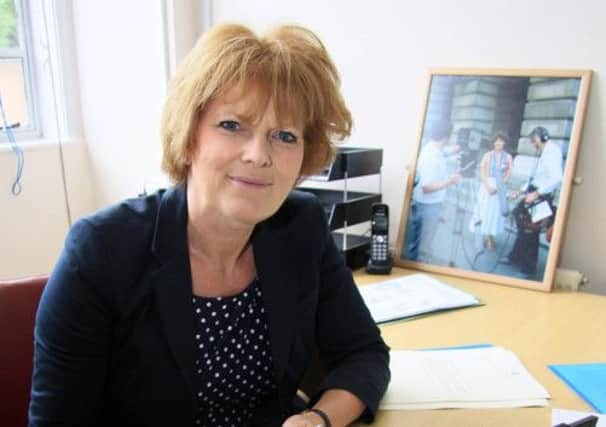Fatal North-South divide is put into focus for cancer patients


The Office for National Statistics (ONS) said there were “wide geographic disparities” in survival rates for patients in England diagnosed between 2004 and 2006.
For some of the most common cancers, the percentage of people who lived for a year after diagnosis was almost 20 per cent higher in some of England’s 28 regional cancer registries when compared with others.
Advertisement
Hide AdAdvertisement
Hide AdFigures reveal 69.1 per cent of men with prostate cancer survived five years after diagnosis in South Yorkshire and the north Midlands – the lowest rate in the country – compared with 82.9 per cent in the Yorkshire cancer network, which covers West Yorkshire and parts of North Yorkshire, and 86.1 per cent in Warwickshire and north Worcestershire.
Numbers of people with colon cancer who lived for five years stood at 48 per cent in South Yorkshire and the north Midlands, rising to 52.6 per cent in the Humber and Yorkshire Coast cancer network. However, in Dorset the figure stood at 59.8 per cent.
There were also disparities with survival rates for people diagnosed with bladder cancer – 58.9 per cent of women in Kent and Medway survived for one year compared with 75.8 per cent in north London. In south Bedfordshire and Hertfordshire, 82.7 per cent of men lived for a year after diagnosis compared with 73.8 per cent of men in South Yorkshire and the north Midlands and Essex.
North-west London had the best one-year survival rates for lung cancer patients, with 36.7 per cent of women and 32.2 per cent of men surviving for a year. But in Lancashire and south Cumbria only 23.5 per cent of women and 21.7 per cent of men survived for the same time period.
Advertisement
Hide AdAdvertisement
Hide AdBreast cancer survival rates were broadly similar across Yorkshire after five years standing at 83.8 per cent in the Yorkshire network and 81.1 per cent in South Yorkshire and the north Midlands, although they ranged across the country from 76.6 per cent in north-east London to 84.9 per cent in Herefordshire, Gloucestershire and south Worcestershire.
While there were wide variations reported by the ONS, researchers also found one-year and five-year survival rates for adults increased overall for eight common cancers between 2002 and 2006.
The largest improvement for men was a 1.4 per cent increase in numbers surviving for five years with prostate cancer, largely due to better diagnostic tests. Among women, 1.5 per cent more patients with cancer of the cervix survived for five years.
But fewer than 40 per cent of those with cancers of the oesophagus, stomach and lung survive a year after diagnosis, with the five-year survival rate below 20 per cent.
Advertisement
Hide AdAdvertisement
Hide AdNick Ormiston-Smith, of Cancer Research UK, said: “It’s worrying to see there’s still a North-South divide in the number of people that survive cancer. These gaps are likely to be due to deprivation and more needs to be done to tackle this inequality to ensure everyone has the same chance of surviving the disease, no matter where in the country they live.
“But there is good news too. Thanks to research, more people are now surviving cancer than ever before – survival rates have doubled over the last 40 years.”
Penny Woods, chief executive of the British Lung Foundation, said: “Although we are seeing very marginal improvements in lung cancer survival rates over the years, it is still shameful how far survival lags behind other common cancers. For instance, barely seven per cent of people with lung cancer are still alive five years after diagnosis, compared to 84 per cent of women with breast cancer, and 82 per cent of men with prostate cancer.
“We desperately need to see investment in lung cancer research increase if we are going to make any significant inroads into the number of people surviving.”
Advertisement
Hide AdAdvertisement
Hide AdPublic Health Minister Anna Soubry said: “It’s encouraging that cancer survival rates are improving, but we need to go further to close the gap between England and the best in the world, and there is also unacceptable variation across the country.”